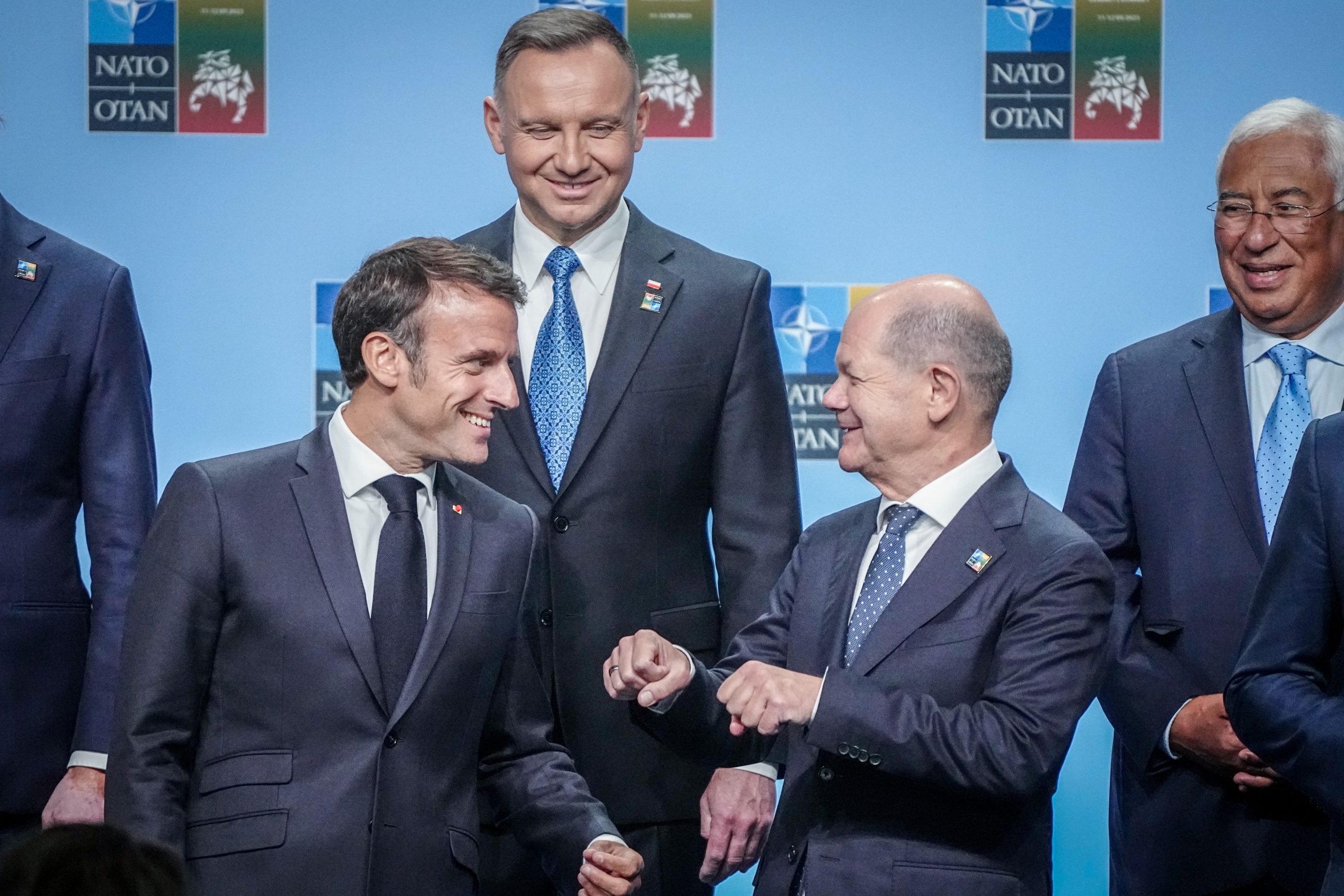France's Call For A Joint European Nuclear Deterrent

Table of Contents
France's Rationale Behind the Proposal
France's proposal for a Joint European Nuclear Deterrent stems from two primary motivations: strengthening European strategic autonomy and addressing shared security concerns.
Strengthening European Strategic Autonomy
France seeks to reduce its reliance on the US nuclear umbrella, aiming for greater control over its security destiny. This ambition reflects a broader desire for increased European sovereignty in defense and foreign policy.
- Increased political influence on the global stage: A unified nuclear deterrent would significantly enhance Europe's bargaining power in international negotiations.
- Enhanced credibility as a security provider within Europe: A shared nuclear capability could bolster Europe's ability to reassure its allies and deter potential aggressors independently.
- Reduced vulnerability to external pressures: Less reliance on external security guarantees translates to greater freedom of action in geopolitical matters. This is particularly pertinent given the evolving global landscape and the potential for shifting alliances.
Addressing Shared Security Concerns
The proposal aims to address the common threats faced by EU member states, especially those bordering Russia and facing potential regional instability. A collective approach to nuclear deterrence offers a potential solution to these shared vulnerabilities.
- Deterrence against potential aggression: A unified European nuclear deterrent could act as a stronger deterrent against potential adversaries, reducing the likelihood of armed conflict. The increased collective strength would make any attack far riskier.
- Collective response to emerging security threats: This framework allows for a coordinated approach to handling emerging threats like cyber warfare, terrorism, and asymmetric conflicts.
- Shared responsibility for maintaining nuclear security: The joint effort would distribute the burden of maintaining a credible nuclear arsenal, reducing the strain on individual member states.
The Challenges and Obstacles to Implementation
Despite the potential benefits, implementing a Joint European Nuclear Deterrent faces numerous hurdles.
Political and Legal Hurdles
Securing consensus among EU member states on nuclear sharing is a major political and legal challenge. Deep-seated differences in national security perspectives and varying levels of comfort with nuclear weapons complicate the process.
- Varying levels of commitment to nuclear deterrence among member states: Some EU members may be hesitant to embrace nuclear weapons, preferring non-proliferation policies.
- Concerns about proliferation and control of nuclear weapons: Strict protocols and safeguards are essential to prevent the misuse or proliferation of nuclear materials. International inspections and oversight would be crucial.
- Complex legal frameworks governing nuclear weapons: Navigating the existing international treaties and legal frameworks regarding nuclear weapons is a significant undertaking.
Technical and Operational Considerations
The practical aspects of a joint deterrent are complex and demand considerable resources. Modernizing and maintaining a shared arsenal require substantial investment and technological expertise.
- Modernization and maintenance of nuclear arsenals: Upgrading existing infrastructure and maintaining the reliability of nuclear weapons systems is a costly and ongoing process.
- Shared command and control structures: Establishing clear command and control structures that ensure effective decision-making in crisis situations is a vital, yet complicated task.
- International legal compliance: Maintaining adherence to all relevant international treaties and regulations will be crucial to avoid legal and diplomatic complications.
NATO's Role and Potential Conflicts
Integrating the proposal with the existing NATO framework poses significant challenges, potentially even undermining the alliance. There are concerns about duplication of effort and strategic competition.
- Potential duplication of effort and resources: A separate European nuclear deterrent might duplicate existing NATO capabilities, leading to inefficient resource allocation.
- Concerns about the dilution of NATO's nuclear deterrent capabilities: Some argue that a separate European system could weaken NATO's overall deterrent effect.
- Potential for strategic competition and rivalry: The creation of a separate European nuclear structure could lead to strategic competition between the EU and NATO, potentially creating tensions within the alliance.
Potential Benefits and Implications of a Joint European Nuclear Deterrent
Despite the challenges, a successful Joint European Nuclear Deterrent could yield significant advantages.
Enhanced Deterrence
A unified European nuclear deterrent could provide a stronger deterrent against potential adversaries than individual national arsenals.
- Increased credibility and strength of the European defense posture: A combined effort would project a more powerful image and a greater capacity to respond to threats.
- Reduction of reliance on external powers: Europe would reduce its dependence on the US for its nuclear security.
- Clearer signal of resolve to protect European interests: A joint deterrent would demonstrate a firm commitment to defend European security interests.
Increased European Strategic Autonomy
The initiative would undeniably enhance Europe's capacity for independent action in security matters.
- Greater influence in international affairs: A stronger security posture translates into greater leverage in global negotiations.
- Stronger ability to negotiate with other global powers: Independent nuclear capabilities allow for more assertive engagement with other global powers.
- Reduced reliance on the US for its security: This is a crucial element in fostering a more balanced and independent European security policy.
Conclusion
The proposal for a Joint European Nuclear Deterrent presents both opportunities and significant challenges for the future of European security. While the goal of strengthening European strategic autonomy and enhancing deterrence is attractive, overcoming the political, legal, technical, and strategic obstacles will require extensive international cooperation and meticulous planning. Further discussions and detailed analysis are crucial to determine the feasibility and long-term implications of this ambitious initiative. To stay informed about the developments and discussions surrounding this critical issue, continue to follow updates on the progress of the Joint European Nuclear Deterrent and related European security initiatives.

Featured Posts
-
 Activision Blizzard Acquisition Ftcs Appeal Process Explained
May 10, 2025
Activision Blizzard Acquisition Ftcs Appeal Process Explained
May 10, 2025 -
 Identifying Emerging Business Centers A Comprehensive Map
May 10, 2025
Identifying Emerging Business Centers A Comprehensive Map
May 10, 2025 -
 When Does The Next High Potential Episode Air On Abc
May 10, 2025
When Does The Next High Potential Episode Air On Abc
May 10, 2025 -
 Blockchain Analytics Leader Chainalysis Adds Ai Capabilities Through Alterya Acquisition
May 10, 2025
Blockchain Analytics Leader Chainalysis Adds Ai Capabilities Through Alterya Acquisition
May 10, 2025 -
 Trump Administration Policies And Their Effect On The Transgender Community
May 10, 2025
Trump Administration Policies And Their Effect On The Transgender Community
May 10, 2025
